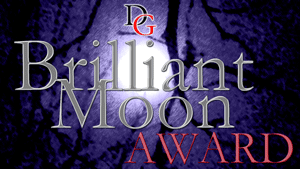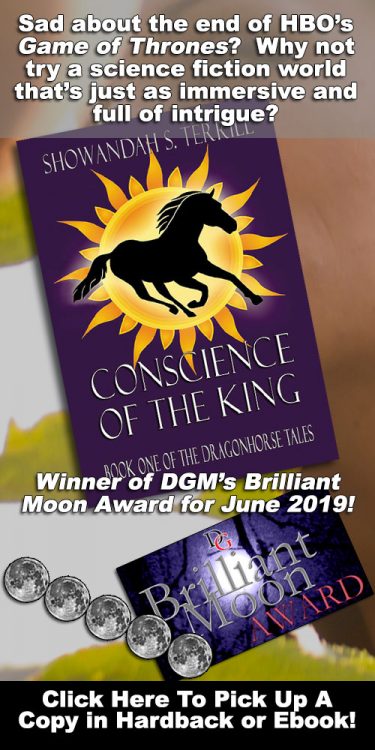 Band: Wisborg
Band: Wisborg
Release House: Danse Macabre Records
Genre: gothic/darkwave
One Sentence Synopsis: Post-punk/darkwave with classical and metal elements
Series: standalone
Single/EP/Album: Album
Release Date: March 29, 2019
Running Time: 51 minutes
MSRP: $7.84 USD or more
Website: Click Here
Music Video: Click Here
Purchase Site: Click Here
Reviewed by: Mother Star
Final Score: 5.0 Moons (out of 5)

Wisborg actually delivers a “gothic” project that would make sense being grouped with the early greats like Sisters of Mercy and Fields of the Nephilim – and that with a front man under 25! Classic goth-rock, also called post-punk, is bass-driven, but Wisborg achieves the effect by playing the low strings on heavily distorted electric guitars and/or with keyboards rather than a bass guitar. The former often gives the sound a metal feel. The depth and complexity in this record does not resemble the top-40-quality opuses so often grounded out by many electronic artists. The sophomore release from the German post-punk/darkwave duo, Wisborg, From the Cradle to the Coffin retains the strong post-punk and darkwave fusion that won acclaim on their debut album, The Tragedy of Seconds Gone.
Theme
This record has more classical and fewer industrial and EDM elements than the first one. The opening track “Danse Macabre” is a completely classical composition for piano and vocals. The “Danse Macabre” or Dance of the Dead, was a medieval artistic expression of the universality of death and the futility of worldly pursuits and goods. With lines like, “We dance proudly or stumble in shame, to reach so much and lose it all the same,” and painting a darkly poetic picture of the dead saying “you will end up just like us one day”, this song is an authentic modern Danse Macabre, true to the classical tradition.
“Blood is Life” presents a rather unique anti-suicide song. Written mostly in the first person, it features no promises of pain ending or of life becoming better later, but rather looking at personal tragedies, past and future alike, a different way and focusing on the joys in life to offset the agony. “To live is to bleed… When life knocks you down again, remember what you have bled for. You can bleed some more, and you will bleed more and you’ll stand it ‘cuz it’s worth it, because life is a gift. Spill your blood!” While most songs intended to dissuade people from suicide say that things will get better or focus on those left behind, reasoning and pleading against a bad decision, “Blood is Life” solidly slaps you upside the head and wakes you up.
Presentation
Konstantin Michealy’s polished vocal style hints at classical training, but he is definitely not doing opera in From the Cradle to the Coffin. The manipulation of the larynx going into the falsetto right before the musical break in “The Reaping” will just about rip your heart out. Transitioning like that from one vocal style to another requires a lot of practice and work. From YouTube videos shot of live performances, it is clear that he can do this live as well, though at present there are no videos of them doing this particular song.
“Spirits that I Called” makes you want to dance, even though the lyrics are sad. Classical influence can still be heard, a lovely piano bit repeats itself but does not get tired. There are so many layers in this song and so much musical depth. Konstantin’s vocals, as usual, do not fail to impress and the ending of this song is particularly moving. The bass line makes this one particularly well-suited for a club tune.
Audience Fit
Wisborg is one of few bands to keep the early (some people might say “actual” or “real”) Gothic rock style, with such pronounced post punk and darkwave influence in their sound. The signature eerie guitars and swirling synths of classic goth rock and darkwave are particularly prominent in “The Reaping”, and “The Sardonic Laughter of Doomed Lovers”. One of the best things about this album is it does not sound just like any other, including its predecessor, The Tragedy of seconds Gone. It is not a rip-off of Sisters of Mercy or any post punk or dark wave acts, yet the influences can indeed be heard. Throbbing, pulsing bass lines, ethereal, dark and at times otherworldly harmonics, classical influences, deep and passionate vocals with widely varying color… what else could you want?
Themes of lost romance, pain and death and why we should go on are as Gothic as you get, as well as poetic depictions of the dead calling from beyond the grave or allegorical images of summoned spirits haunting and tormenting a person. The lyrics in From the Cradle to the Coffin also find hope in the very reasons for hopelessness, and the drive to continue in the very things that would inspire surrender. If Goth finds beauty in the darkness and the pain of life, From the Cradle to the Coffin is truly as Gothic as a Goth can get.
Closing Thoughts
From the Cradle to the Coffin is a deeply introspective, savagely honest, passionate and poetic record about life, love, loss, failure, and coping. It emphasizes the value of life even while confronting it’s vanity. A genuine new goth act has hit the ball straight out of the park with this record.
Theme: 5.0 Moons (out of 5.0)
Presentation: 4.5 Moons (out of 5.0)
Audience Fit: 5.0 Moons (out of 5.0)
Final Score (not an average): 5.0 Moons (out of 5.0)
![]()

